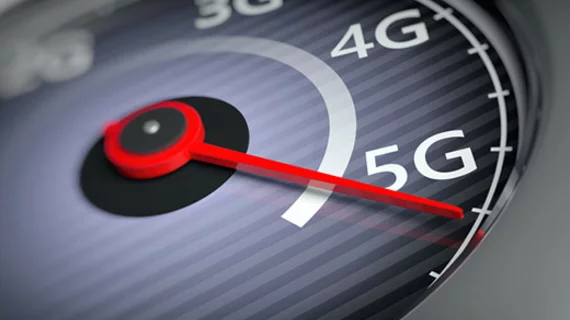5G opens opportunities for remote transmission of ultrasound
For people who live in remote areas without easy access to doctors or hospitals, 5G connectivity can make telemedicine more effective and efficient than its mobile internet predecessor, LTE (similar to 4G), according to new research published in Digital Health [1].
In the study—a collaboration between Nagoya University Hospital, Japanese research institute RIKEN and Japanese telecoms company NTT—three subjects residing in the remote Japanese community of Shinshiro had an abdominal ultrasound exam. Medical staff used a mobile ultrasound imaging system to conduct the exam and wore a head-mounted camera that transmitted the images to a municipal hospital in real time.
“We found that 5G could transmit information such as 4K images and ultrasound images with high image quality and low latency,” says lead author Masaomi Saeki, an assistant professor at Nagoya University’s Graduate School of Medicine, in a news release. “The difference between 4K images and ultrasound images transmitted by 5G and LTE (the 4G network) affected the subjective evaluation of doctors and physical therapists.”
Specifically, the two doctors back at the hospital viewing the transmissionreported that for the video transmitted via 5G, various organs could be evaluated without any problems, and there were no problems in diagnosing the cases. Additionally, although the video transmitted over 5G had a delay, the doctors classified that delay as “acceptable” and “rather acceptable.”
The video transmitted via 4G, on the other hand, was more problematic, with the doctors agreeing that network-related transmission delays were “ not acceptable.”
Saeki was optimistic about what the results indicate for the future of telemedicine, and its potential positive impacts on people that would otherwise struggle to access care.
“Besides representing a breakthrough in advanced medicine, we expect this to reduce regional disparities in healthcare,” concludes Saeki. “Telemedicine allows patients to receive high-quality medical services without having to leave home or travel and to efficiently use medical resources.
Another promising aspect of the study is the fact that the practitioners taking the ultrasound images were radiologists that do not typically perform ultrasound examinations in their daily work. To operate the ultrasound probe, they were guided remotely. Their success is a positive indication that, with remote instruction, a wider pool of people may be able to perform the ultrasounds and still be effective.
